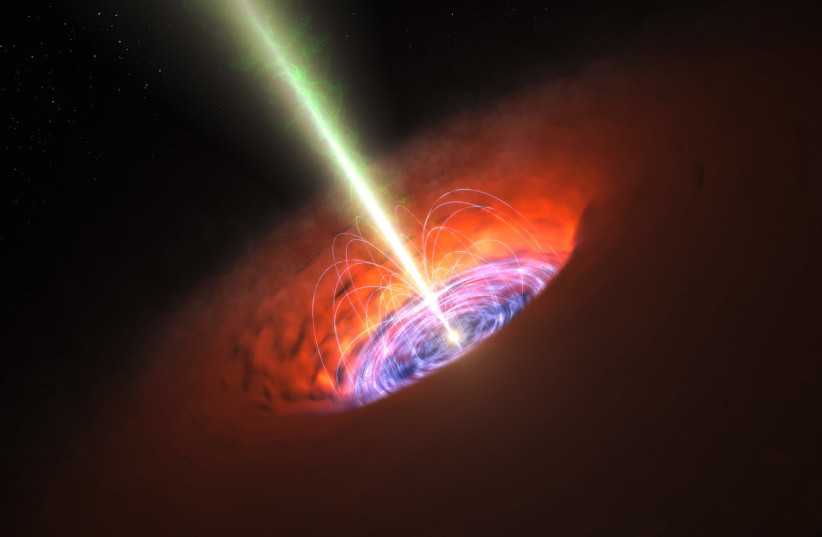The supermassive black hole at the center of our Milky Way galaxy is chaotic and unpredictable, with its flares being very irregular both daily and in the long term, a new study has revealed.
The findings of this study were published in the peer-reviewed academic journal Monthly Notices of the Royal Astronomical Society.
Supermassive black holes reside in the center of most, if not all, large galaxies. As their name implies, these supermassive black holes are enormous, dwarfing many other objects in space.
The black hole at the galactic center of the Milky Way, Sagittarius A*, is estimated to have a mass of around 3.7-4.3 million solar masses (a measure of mass used in astronomy, with one solar mass being roughly equivalent to the weight of the Sun and about 333,000 times the mass of Earth).
Black holes in general are incredibly mysterious. They are, in essence, just massive concentrations of gravity so strong that nothing, not even light, is able to escape. Scientists weren't even sure they existed 20-30 years ago, and the only way we know the black hole exists is because it has an enormous gravitational pull that influences matter around it.
While we understand how most black holes are formed, we don't understand how supermassive black holes do, though many theories exist.
But one thing black holes do, aside from being enormous masses of gravity, is emit radiation and radio waves.
In particular, Sagittarius A* is a known source of radio waves, gamma rays and X-rays and, while visible light is blocked by gas and dust, these flashes of waves and rays emit their own type of brightness.
This itself isn't surprising. After all, nearly 50 years ago, Stephen Hawking theorized that black holes would produce a constant form of radiation over time like any other warm object, with the temperature determined by their surface gravity and stronger gravity producing a higher temperature. This long-theorized form of radiation was dubbed Hawking radiation.
For decades, it was known that it produced these bursts of radiation every day. But they are ten to a hundred times brighter than normal signals.
Why does this happen?
That is what the research team, led by the University of Amsterdam's Alexis Andres, sought to find out.
The team made use of data going back 15 years collected by NASA's Neil Gehrels Swift Observatory, which is a satellite in orbit around Earth that focuses on detecting bursts of gamma rays.
There were a few conclusions that were drawn from this data. For one thing, the gamma-ray bursts were very active between 2006 and 2008. But after that, it saw a steep decline until 2012 and it picked up again.
Was there a pattern to this?
The flares are irregular, but there are possible theories about why even if patterns aren't the answer. Perhaps it is related to passing clouds or other stars. But regardless, more information will need to be gained from further research.
"How the flares occur exactly remains unclear," co-author Dr. Jakob van den Eijnden of the University of Oxford said in a statement.
"It was previously thought that more flares follow after gaseous clouds or stars pass by the black hole, but there is no evidence for that yet. And we cannot yet confirm the hypothesis that the magnetic properties of the surrounding gas play a role either."
Ultimately, more research will need to be done to better understand the mysteries of supermassive black holes.
Another international study led by the University of Haifa is seeking to also solve another one of these mysteries by mapping out their vicinity through using NASA's Hubble Space Telescope.
But only time will tell if these findings are able to help piece together the supermassive black hole puzzle at the center of our galaxy.

